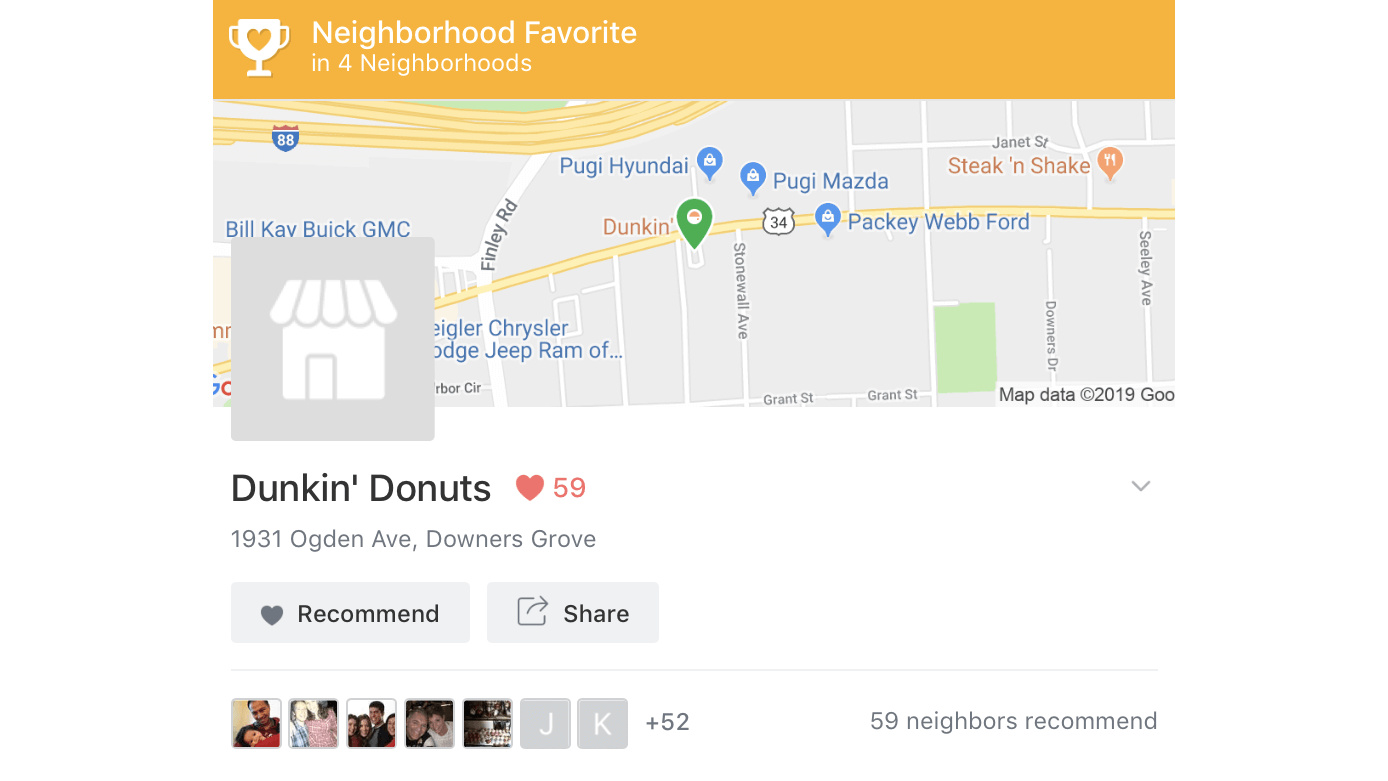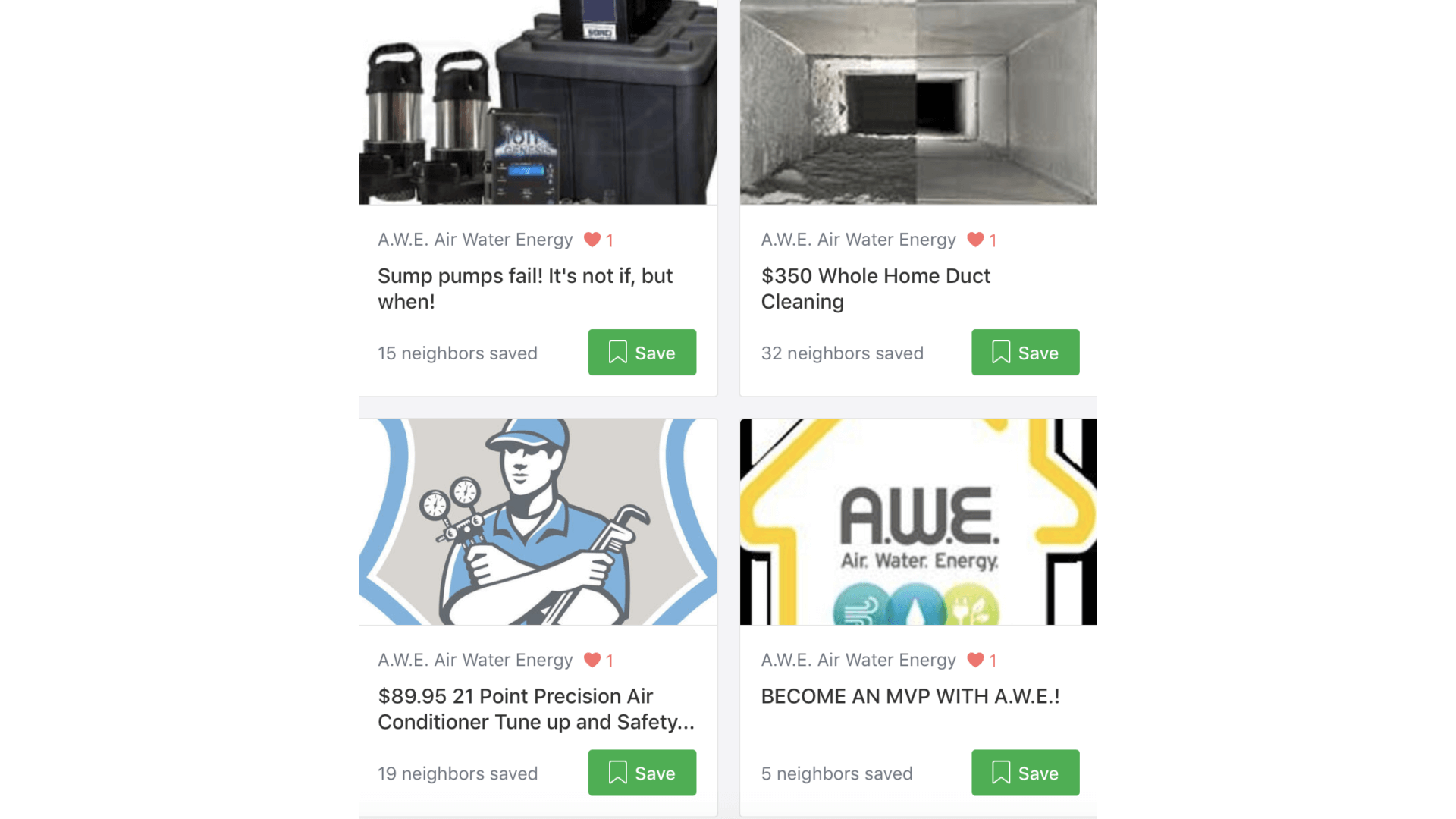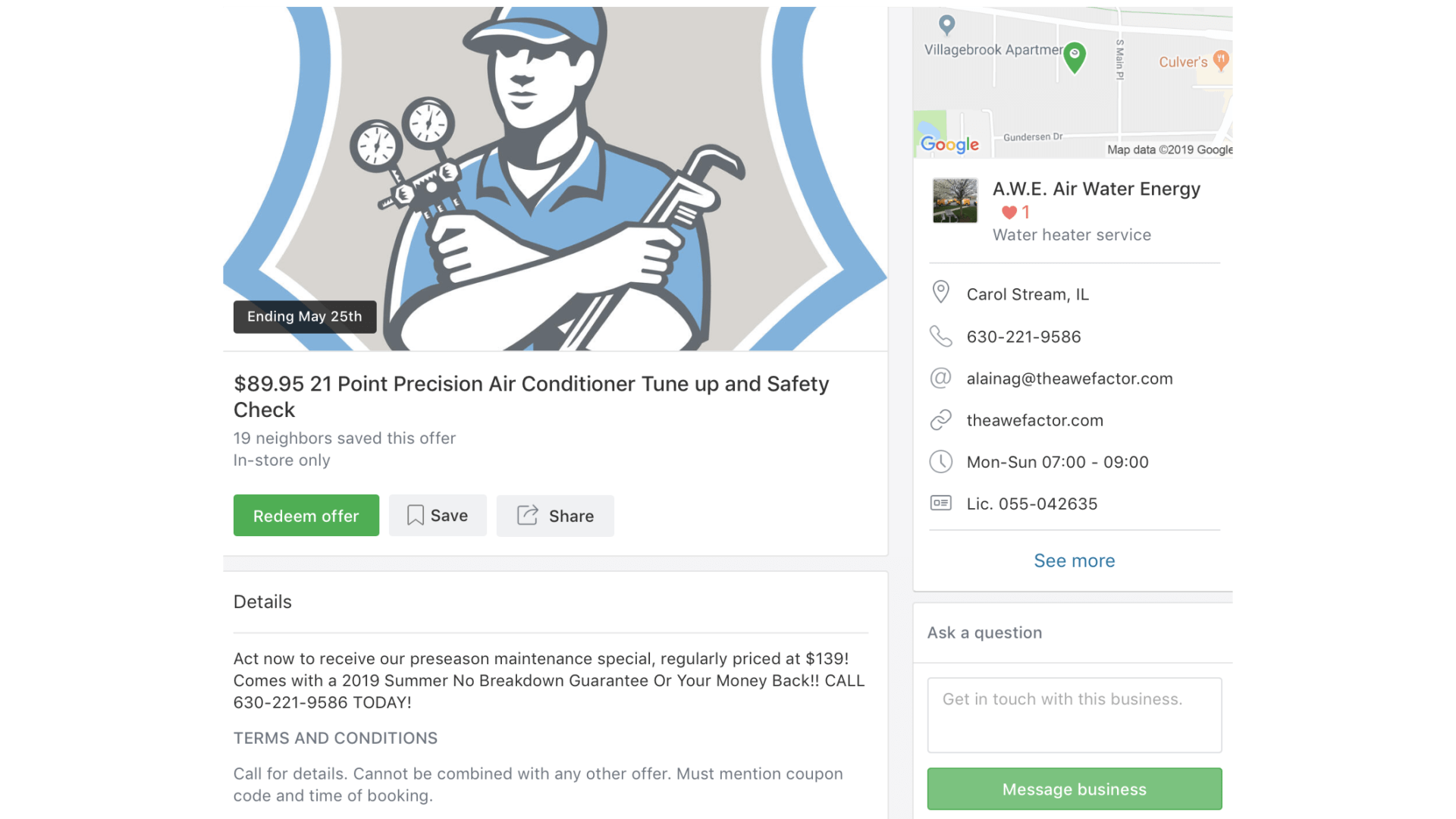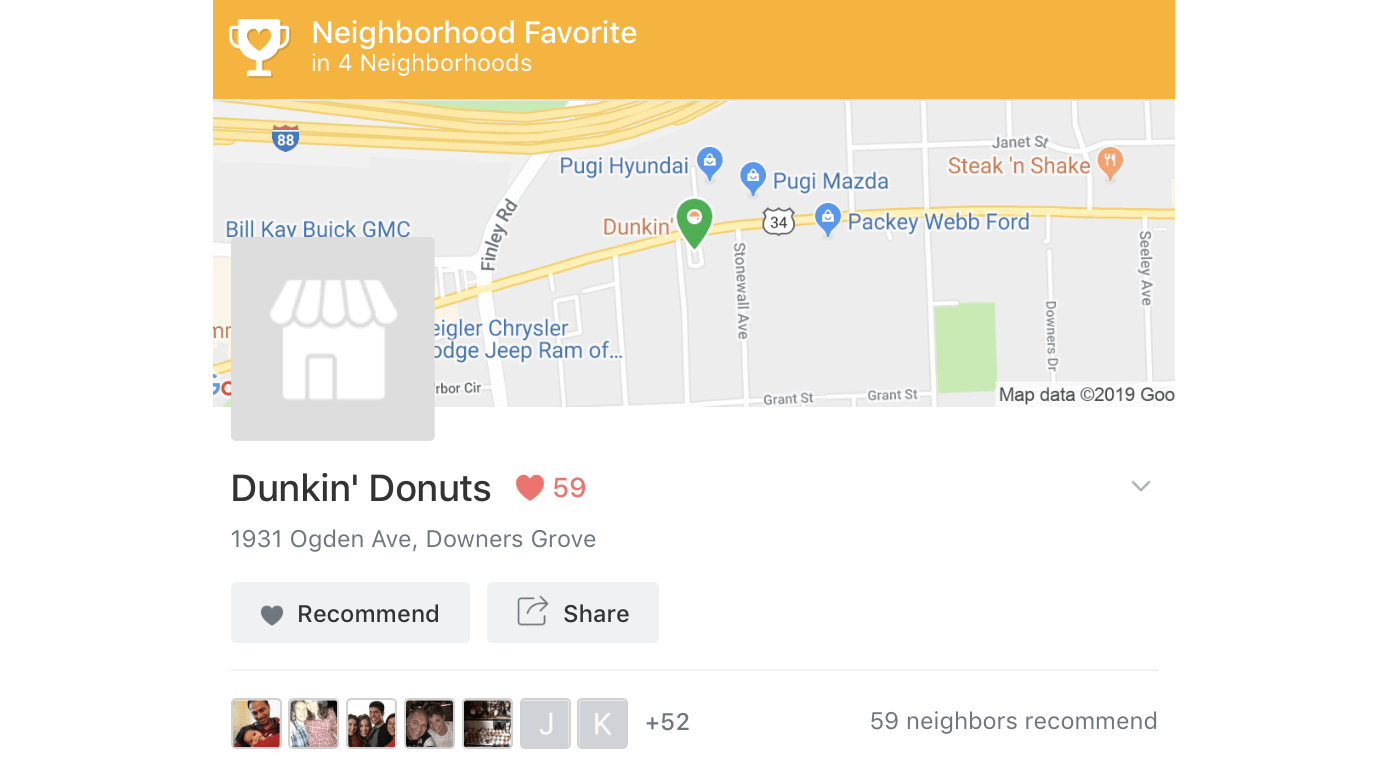Nextdoor is more than a place for neighbors to sell used coffee tables and worry about the local crime rate. The self-described “world’s largest social network for the neighborhood” is also a location marketing platform for businesses.
The rise of Nextdoor
Since expanding to the United States in 2011, Nextdoor has grown steadily to include more than 220,000 neighborhoods globally, even at a time when Facebook seemingly has a stranglehold on social networks. How? By offering a hyperlocal platform. Whereas Facebook prides itself on connecting people living in far-flung locations, Nextdoor goes in the opposite direction by connecting people who live in close geographic proximity to each other. Only users with verified addresses may join, and when they do, Nextdoor assigns them to a neighborhood with defined boundaries. From there, users share a wide range of content, such posting lost-and-found notices, discussing the impact of municipal legislation, organizing public safety meet-ups – and, in recent years, buying and selling services and products.
When Nextdoor first emerged, the site took pains to stay free from commercial activity. In fact, as CEO Sarah Friar told the BBC, Nextdoor originally banned commerce, thinking that buying and selling would dilute the platform’s mission of being a town hall for open discussion among neighbors. But its everyday users began offering their services, anyway, for entrepreneurial businesses such as babysitting and tutoring.
“The reality is that commerce is a huge part of healthy communities,” she said. “Our customers have taught us that this is an important part of building a community.”
This evolution is similar to how Facebook began allowing businesses to buy and sell on its Marketplace after users began to rely on private groups to buy and sell goods and services. In other words, commerce bubbled up from users.
How Nextdoor caters to businesses
Now Nextdoor is actively catering to businesses in a few important ways.
Businesses can claim pages and create organic listings just like they can on Google My Business. The pages give Nextdoor users the chance to rate and review them (with highly reviewed businesses earning a “Neighborhood Favorite” badge). An organization can claim up to 10 pages with a single account. The rules of optimizing content on Google apply here. Claiming a page properly means sharing accurate location data, compelling content optimized for search and compelling images. Also, it’s essential for businesses to exercise sound reputation management practices, such as responding to user comments and reviews. Be aware that because of Nextdoor’s hyperlocal nature, customer ratings/reviews are likely being posted by people who personally know each other, making them credible and valuable.

Companies can also offer promotions, a recently launched feature. As the following examples illustrate, offers contain well-defined calls to action such as “$350 Whole Home Duct Cleaning” and “$89.85 21 Point Precision Air Conditioner Tune Up and Safety Check.” Businesses can set conditions such as “in-store only” and target the offer to users across multiple neighborhoods depending on how targeted the offer needs to be. Users can redeem, save and share the offer as well as message the business for more detail. Also, Nextdoor encourages users to discover offers with a prominently placed icon of their personal pages. As with any offer online, it’s important that businesses use clear, brief calls to action with compelling graphics, complemented with an accurate location listing on Nextdoor.


Nextdoor is also a platform for national brands with multiple locations. As this example from Dunkin’ shows, local franchises of big brands are getting listed and reviewed by customers just like SMBs are.

Scaling a presence on Nextdoor likely requires a national or global business to empower local franchises to manage their pages, create offers and respond to reviews given Nextdoor’s restrictions on how many pages a single business can manage. Certainly, as Nextdoor looks for ways to monetize (which it appears to be doing), I can see the platform offering advertising solutions targeted toward large enterprises with the budgets to create hyperlocal campaigns.
What you should do
What happens next remains to be seen. For now, I recommend that businesses:
- Have a presence. Yes, Nextdoor represents one more digital platform you’ll need to manage. But it’s also an opportunity. Be aware that customers are likely looking for you and your competitors on Nextdoor for local services and products, especially if you are a service-area business such as a plumber or contractor. Creating and managing a page seems like a must.
- Apply offers if appropriate. If your business relies on offers and promotions to draw foot traffic, experiment with audience targeting across multiple neighborhoods to test how well offers locate based on location.
- Manage your reputation. As noted, people who review your business on Nextdoor are likely to be known personally by other Nextdoor users in your immediate vicinity. Given the propensity of Nextdoor users to review businesses, be vigilant in managing your customer ratings/reviews.
Nextdoor is a young and evolving platform. So far, the company has been able to cater to brands without losing its authentic vibe. The platform has experienced some reputation issues of its own largely having to do with the site’s popularity for reporting crimes and suspected crimes. But Nextdoor is not going away. The platform demands your consideration.
Opinions expressed in this article are those of the guest author and not necessarily Search Engine Land. Staff authors are listed here.
